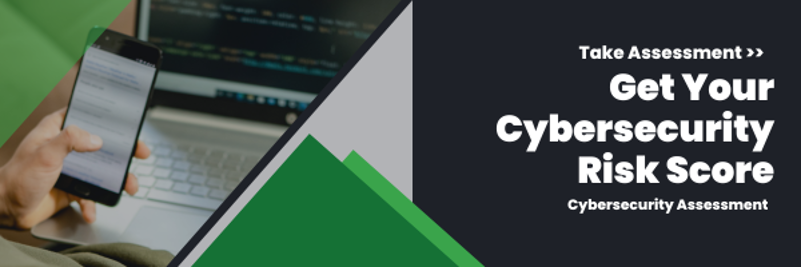As cyber attacks evolve and attack surface grows, artificial intelligence (AI) emerges as a powerful ally that helps organizations stay ahead of cyber criminals. The global market for AI in cybersecurity is predicted to hit $114 billion by 2031. By harnessing the capabilities of machine learning and automation, AI enhances threat detection, streamlines response strategies and fortifies security strategies.
However, the same technology that strengthens defenses is also being exploited by cyber criminals to create sophisticated attacks. By exploring both the positive and negative impacts of AI on cybersecurity, companies can effectively leverage AI to build a robust cybersecurity framework and proactively combat emerging threats.
Read: Navigating the Pros and Cons of Artificial Intelligence
AI for Threat Detection and Response
One of AI’s most significant contributions to cybersecurity is its ability to detect and respond to threats more efficiently. Today’s cyber threats have become more sophisticated, making them hard to detect. Traditional methods of identifying cyber threats rely on predefined rules and signature-based detection, which often miss new or unknown threats, like zero-day attacks.
AI utilizes machine learning algorithms to quickly analyze vast amounts of data in real-time and identify patterns and anomalies that could indicate a potential attack, like unusual network activity or suspicious user behavior. Machine learning algorithms can also learn from previous cyber attacks, and predictive analysis can forecast potential threats from historical data. This allows companies to prioritize proactive defense measures, deterring threats before they become harmful.
Once a threat is detected, AI can automate responses to the attack, reducing the time it takes to neutralize the threat and freeing up staff to focus on more important tasks. Automated tools can isolate compromised devices, block malicious traffic and provide real-time alerts to IT teams, minimizing the damage caused.
Build a Cybersecurity Framework with AI
AI can play a crucial role in creating and implementing comprehensive cybersecurity frameworks. These frameworks outline the policies, procedures and tools necessary for protecting a company’s information assets.
AI helps automate the identification of vulnerabilities, enforce security protocols and continuously monitor networks for potential breaches and vulnerabilities. This results in a dynamic cybersecurity strategy that evolves in response to the ever-changing threat landscape.
Read: 7 Steps on Creating an AI Policy for Your Company
Identity and Access Management
AI can be used in identity and access management (IAM) by analyzing user behavior patterns to detect anomalies that might indicate unauthorized access or compromised accounts, like unusual login times or access to specific files. AI-powered facial recognition, voice recognition and fingerprint analysis can enhance the security of multi-factor authentication (MFA) processes.
Vulnerability Management
Identifying and managing vulnerabilities within IT systems is crucial for preventing cyber attacks. AI can automate vulnerability assessments by continuously monitoring and scanning networks, software and hardware to identify and prioritize weak points that may be susceptible to exploitation.
Unlike manual vulnerability scans, which happen periodically, AI can conduct these assessments in real-time, providing organizations with immediate alerts about potential risks. Once vulnerabilities are detected, AI can recommend remediation efforts and automate the application of security patches. This proactive approach allows for quicker remediation before cyber criminals can exploit vulnerabilities.
AI-Driven Network Security
AI-powered intrusion detection and prevention systems (IDS and IPS) can monitor network traffic to uncover unauthorized users, suspicious patterns and potential attacks in real-time. AI helps these systems process data faster to identify and block cyber attackers before they do too much damage.
Read: Navigating AI Hallucinations: How to Fact-Check Them
The Dark Side of AI and Cybersecurity
Unfortunately, AI is a double-edged sword. As organizations leverage AI to fortify their defenses, cyber criminals are exploiting the same technology to launch more advanced and targeted attacks.
- AI-powered phishing attacks: Phishing remains one of the most common forms of cyber attacks, and AI is being used to make these attacks more convincing. AI can be trained to analyze online communication patterns, enabling cyber criminals to craft highly personalized and realistic phishing messages. These AI-generated emails, texts or social media messages are more challenging to detect because they mimic legitimate communication more closely than traditional phishing methods, and cyber criminals can create a higher volume of these messages in less time, leading to a higher success rate.
- Automated cyber attacks: AI is being used to automate cyber attacks, identify vulnerabilities in real-time and bypass security measures, making it easier to infiltrate networks and steal data. Cyber criminals can deploy AI-powered malware capable of self-learning, making it more adaptable and difficult to eliminate.
- Deepfakes: Cyber criminals can also be used to manipulate visual or audio content to make it seem real. This deepfake content is then distributed online, usually via social media platforms, to create stress, fear or confusion.
How to Stay Ahead of Cyber Threats with AI
To stay one step ahead of AI-driven cyber attacks, businesses must adopt proactive strategies. Here are some key steps:
- Invest in AI-powered cybersecurity solutions: Incorporate machine learning and AI-based tools into your cybersecurity stack. These technologies will improve your ability to detect and respond to threats faster and more accurately than ever before.
- Regular staff training: Since AI can make phishing attacks more convincing, employee training on how to spot phishing attempts is crucial. Regularly update your workforce on the latest threats to reduce human error.
- Develop a cybersecurity framework: Create a cybersecurity framework that leverages AI for continuous monitoring and updating. This framework should evolve in response to emerging threats and incorporate AI’s capacity for detecting anomalies in real-time.
Protect Your Company with Thriveon
With over 20 years of experience, Thriveon has been a trusted provider of comprehensive cybersecurity services. Our expertise can help your business mitigate breaches and achieve regulation requirements. We have the cybersecurity knowledge to help your business strengthen its defenses and develop effective cybersecurity policies.
Schedule a meeting today to see how we can help your business.

